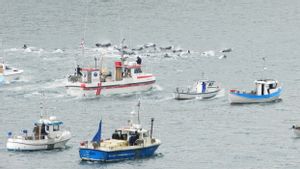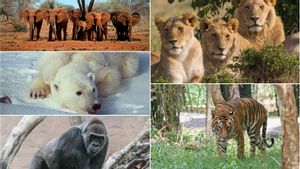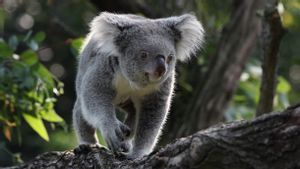JAKARTA - Ecuadorian authorities confirmed on May 25 that a giant tortoise, discovered in 2019 in the Galapagos Islands, is a species that was considered extinct a century ago.
Found on Fernandina Island two years ago on a joint expedition between the Galapagos National Park and the Galapagos Conservation, scientists from Yale University identified it as the endangered species Chelonoidis Phantasticus.
"Yale University discloses the results of the respective genetic studies and DNA comparisons made with specimens extracted in 1906", Galapagos National Park said in a statement, quoted by CNN.
The Galapagos National Park immediately prepared an expedition, to look for more turtles to save the species. The turtles found were female.
"It is believed to have become extinct more than 100 years ago! We have reaffirmed its existence", Ecuador's Environment Minister Gustavo Manrique wrote on his Twitter account.
In the Galapagos Islands, on which the British scientist Charles Darwin's theory of species evolution was based in the 19th century, many varieties of turtles coexist with flamingos, boobies, albatrosses, and cormorants, a family of waterbird species. The archipelago is also home to a large amount of flora and fauna in danger of extinction.
To note, the current population of giant tortoises of various species is estimated at 60.000, according to data from the Galapagos National Park. One of the best known is 'Lonesome George', the male Pinta Island tortoise, the last known species, which died in 2012 without leaving any offspring.

The biggest mystery
Meanwhile, cited from the Californianewstimes, the Yale University research team confirmed this discovery by comparing the turtle genes found in 2019 with those found in 1906.
"One of the greatest mysteries in the Galapagos world is the giant tortoise on Fernandina Island. The rediscovery of this lost species could save it in just a few moments", said a tortoise expert from the State University of New York who is also Deputy for Science and Conservation at Galapagos Nature Reserve Dr. James Gibbs.
Scientists found traces of at least two other turtles that may have belonged to the Fernanda species from the Fernandina volcano during the expedition.
If a male giant tortoise of the same species is found, the team will link Fernanda with him at the Giant Tortoise Breeding Center in the Galapagos National Park in Santa Cruz to encourage breeding.
SEE ALSO:
If successful, conservationists will confine and raise the hatchlings and bring them back to Fernandina. Researchers want to avoid what happened to Lonesome George.
"I really wanted to avoid the fate of Lonesome George", Danny Rueda Cordova, director-general of Galapagos National Parks said in a statement.
"My team at Galapagos Parks and Reserves said in September this year. We are planning a series of large-scale expeditions back to Fernandina Island in search of additional turtles", he concluded.
The English, Chinese, Japanese, Arabic, and French versions are automatically generated by the AI. So there may still be inaccuracies in translating, please always see Indonesian as our main language. (system supported by DigitalSiber.id)













